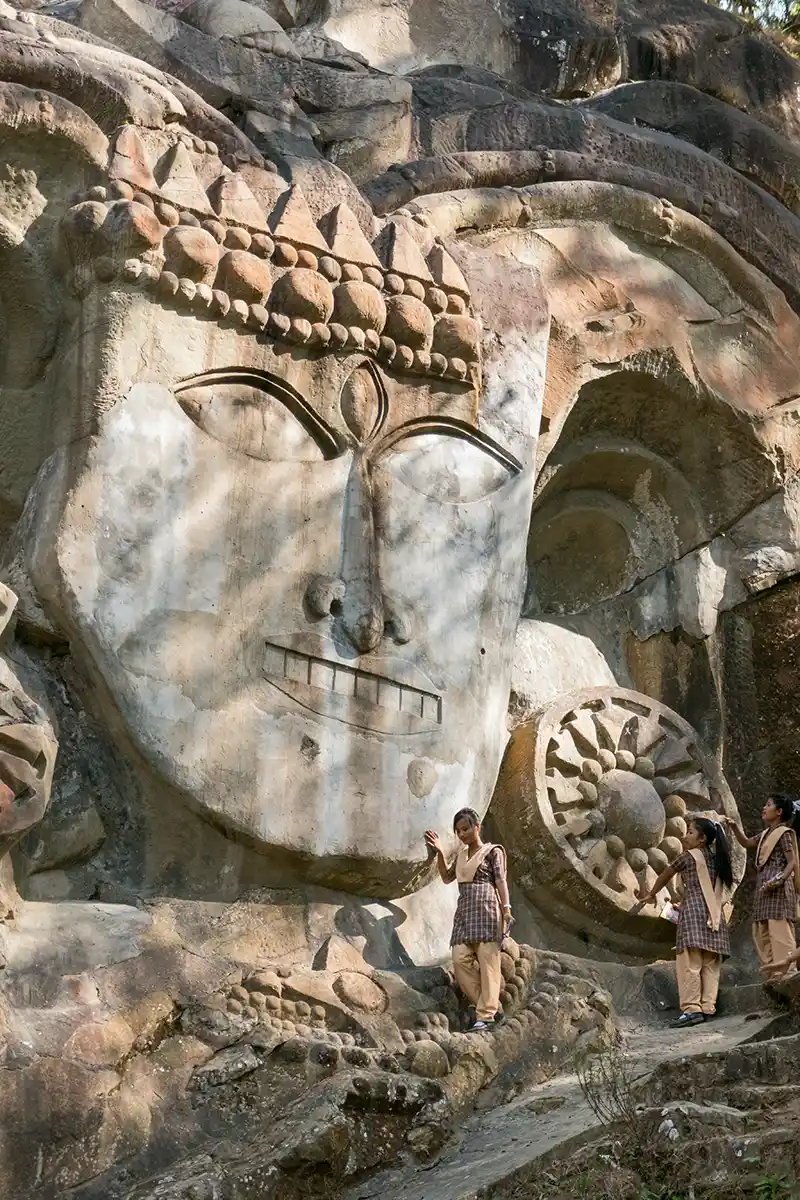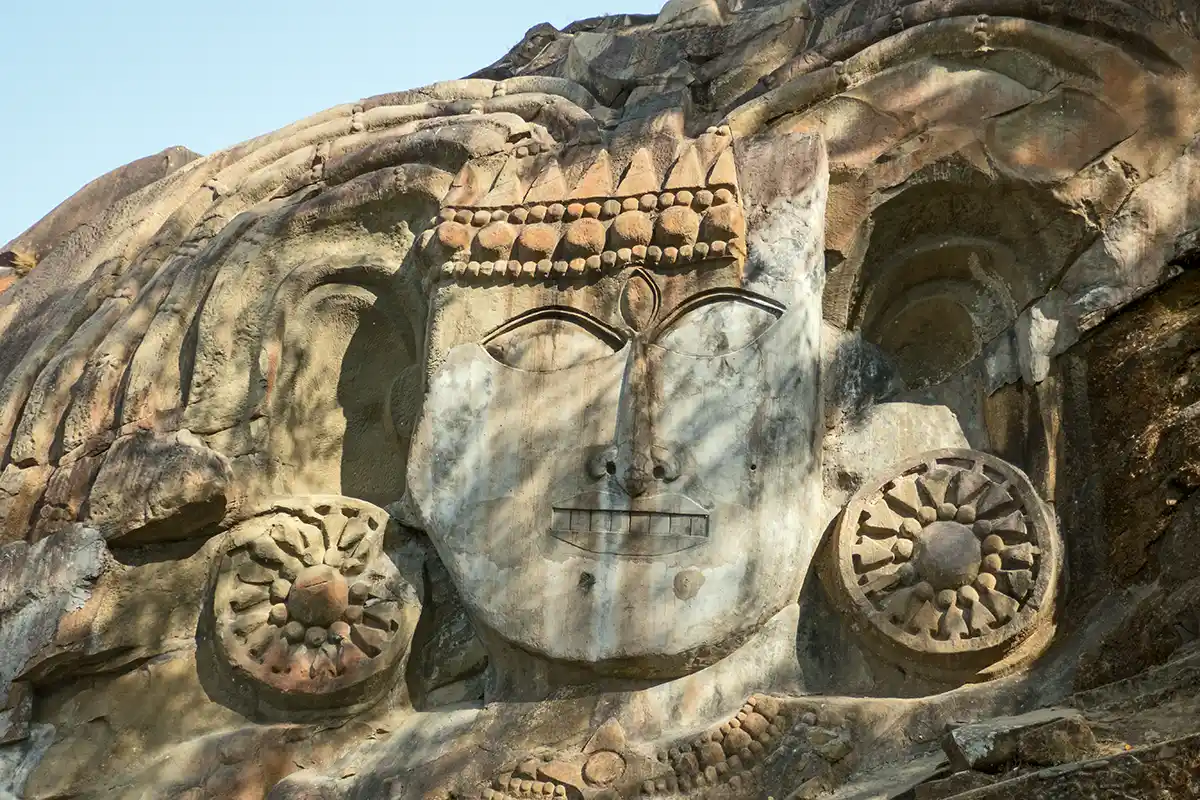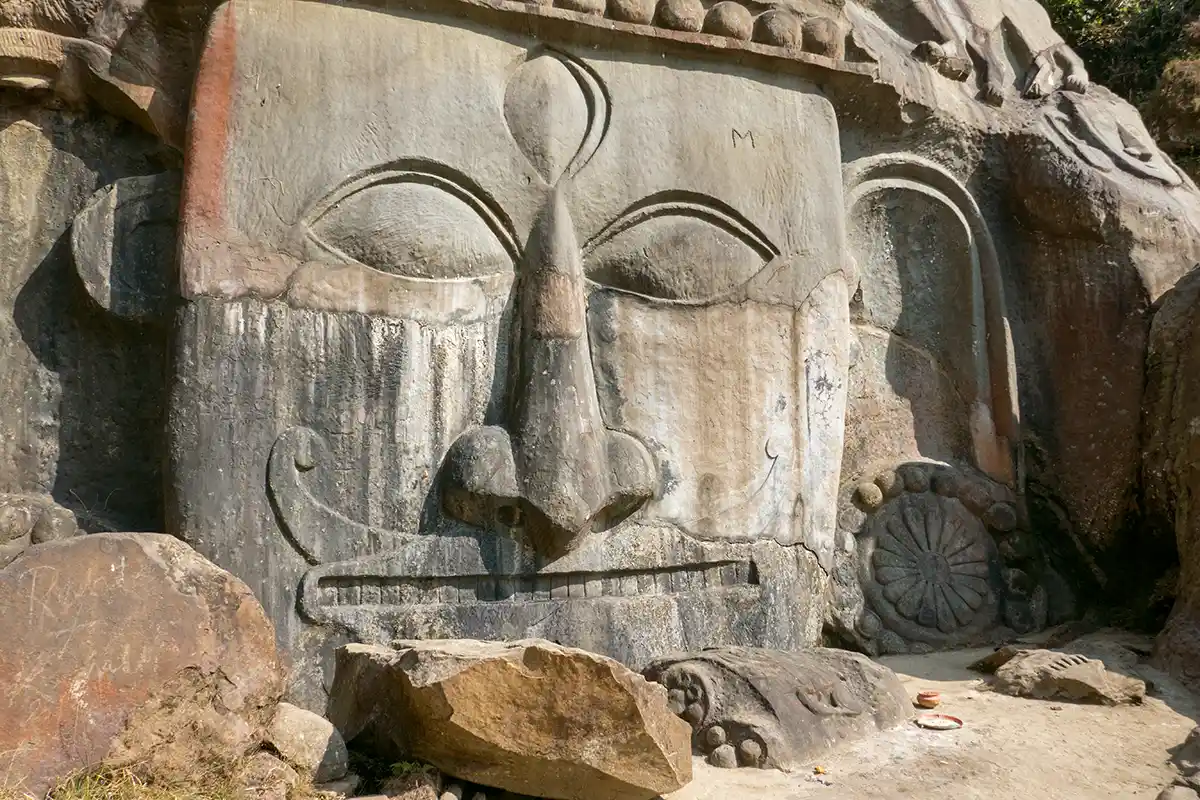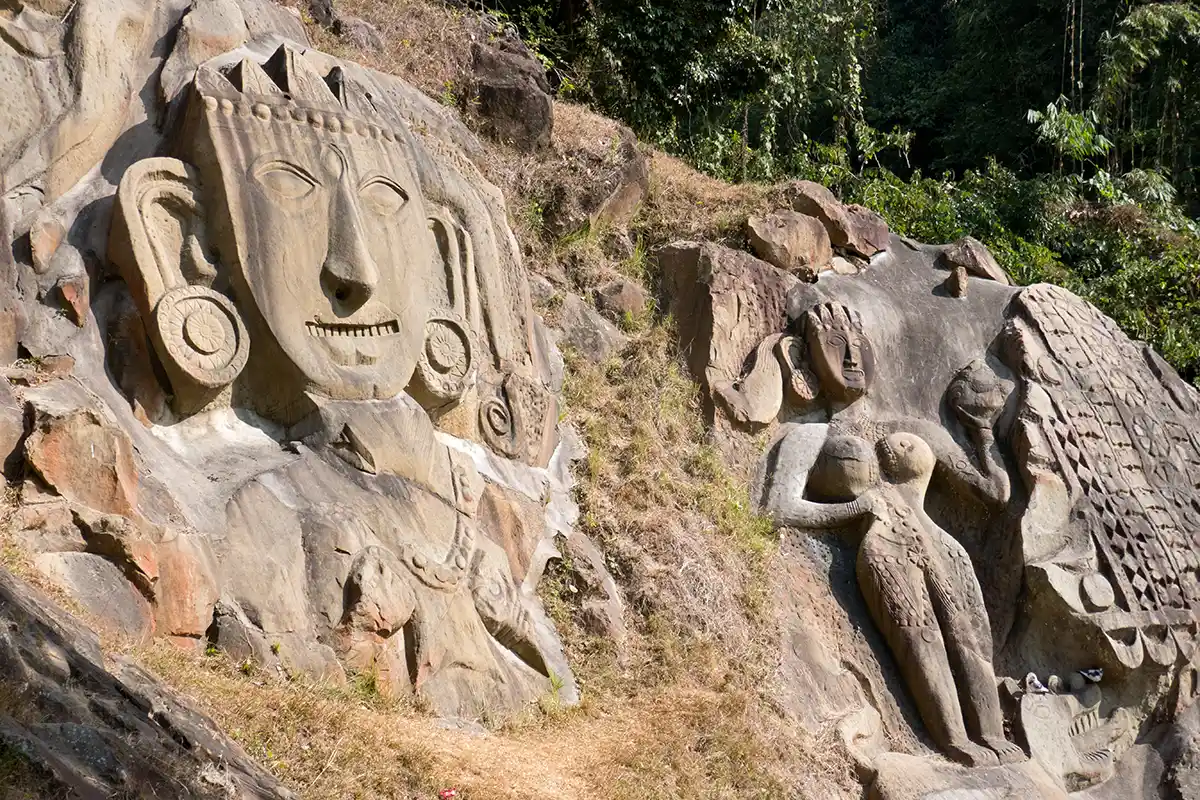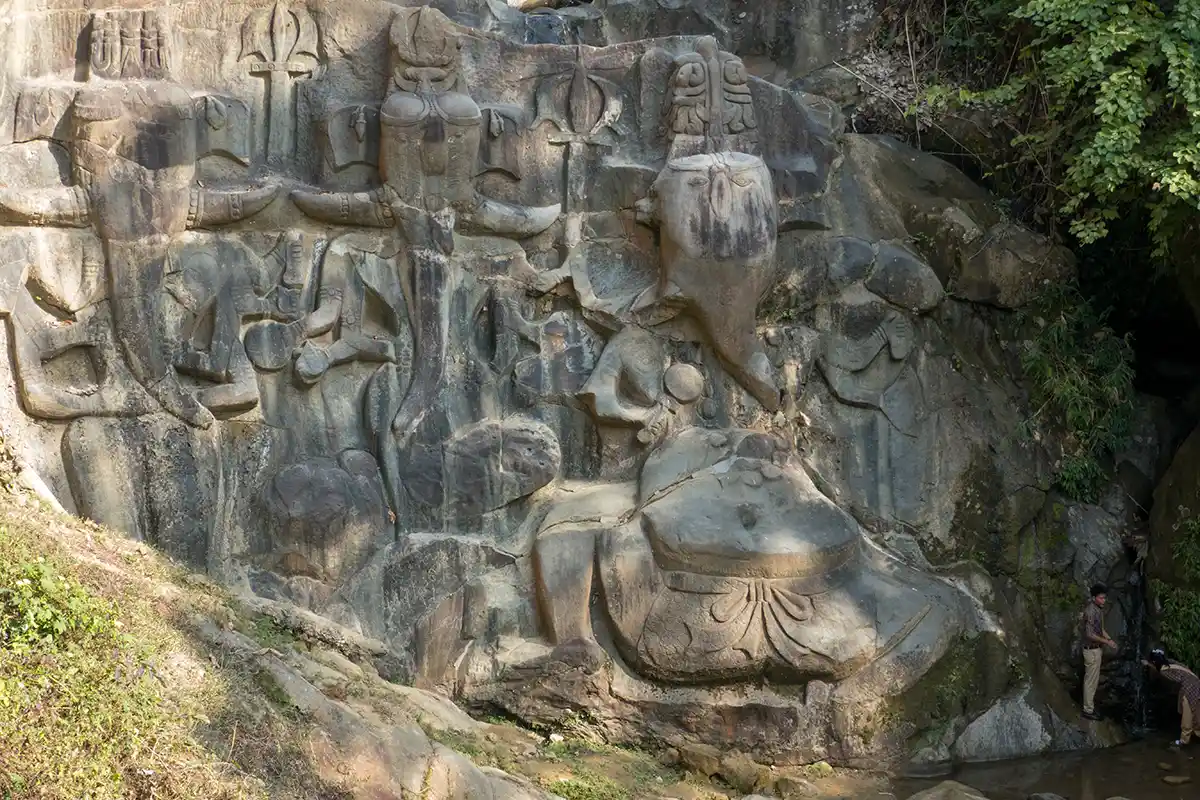Unakoti, Tripura
Located in the Raghunandan hills of the northeastern Indian state of Tripura, Unakoti has been a Hindu pilgrimage site since at least the 7th century. Unlike most Hindu sacred sites with temple constructions, Unakoti is famous for its collection of enormous bas-relief carvings on the side of a rocky hill. Archaeologically, little is known about Unakoti, and the site's fascinating myths reveal more details.
According to one myth, Unakoti, which means 'one less a koti' in the Bengali language, traces its origins to a short visit by the god Shiva. On his way to Mount Kailash (some sources say to the sacred city of Banaras), Shiva had encamped for a night at the rocky Raghunandan hill along with many other deities (a koti equals ten million). Before commencing a night of revelry with the deities, Shiva told them to wake before dawn so they could continue their long journey. Upon waking, he found them still asleep, however. Dismayed, he was left alone while all the other gods and goddesses became stone images. Since then, there have been a koti minus one - minus Shiva - deities at the site.
Another myth, popular with the regional people, tells of a sculptor named Kallu Kumar, who fashioned the stone carvings of the deities. A devotee of Parvati, the wife of Shiva, Kallu Kumar wished to accompany Shiva and Parvati to their abode on Mount Kailash. Shiva was wary of this matter, so Parvati devised a solution. She suggested that if the sculptor made ten million images of Shiva and the deities before dawn the following day, he could accompany them to Kailash. As the sun rose the next day, however, Kallu Kumar was one short of a koti, which gave Shiva the excuse to leave him behind. A variation of this story is that in a dream, Kallu Kumar was tasked with carving the ten million deities. He did so, yet swayed by his pride (and perhaps hopeful of being considered divine), he made the last carving an image of himself, making the number one less a koti of deities.
The bas-relief sculptures of Unakoti are the largest in India, and their styles of carving- classical and tribal - indicate that they were made during different historical periods. The primary deities depicted at Unakoti are Shiva, Durga, and Ganesh. On the top of the hill above Unakoti, images of Vishnu, Hanuman, and Ravana may also be found, as well as remains of a temple that may have existed before the sculptures were made. The statues of Shiva at Unakoti are 30 feet tall.
Every year, two hugely attended pilgrimage fairs are held at Unakoti: the solar festival of Makar Sankranti in January and the Ashokastami festival in April. Besides functioning as a pilgrimage site, Unakoti is being excavated by the Archaeological Survey of India and hopefully will soon be protected as a Unesco World Heritage Site.
For additional information:

Martin Gray is a cultural anthropologist, writer and photographer specializing in the study of pilgrimage traditions and sacred sites around the world. During a 40 year period he has visited more than 2000 pilgrimage places in 160 countries. The World Pilgrimage Guide at sacredsites.com is the most comprehensive source of information on this subject.
